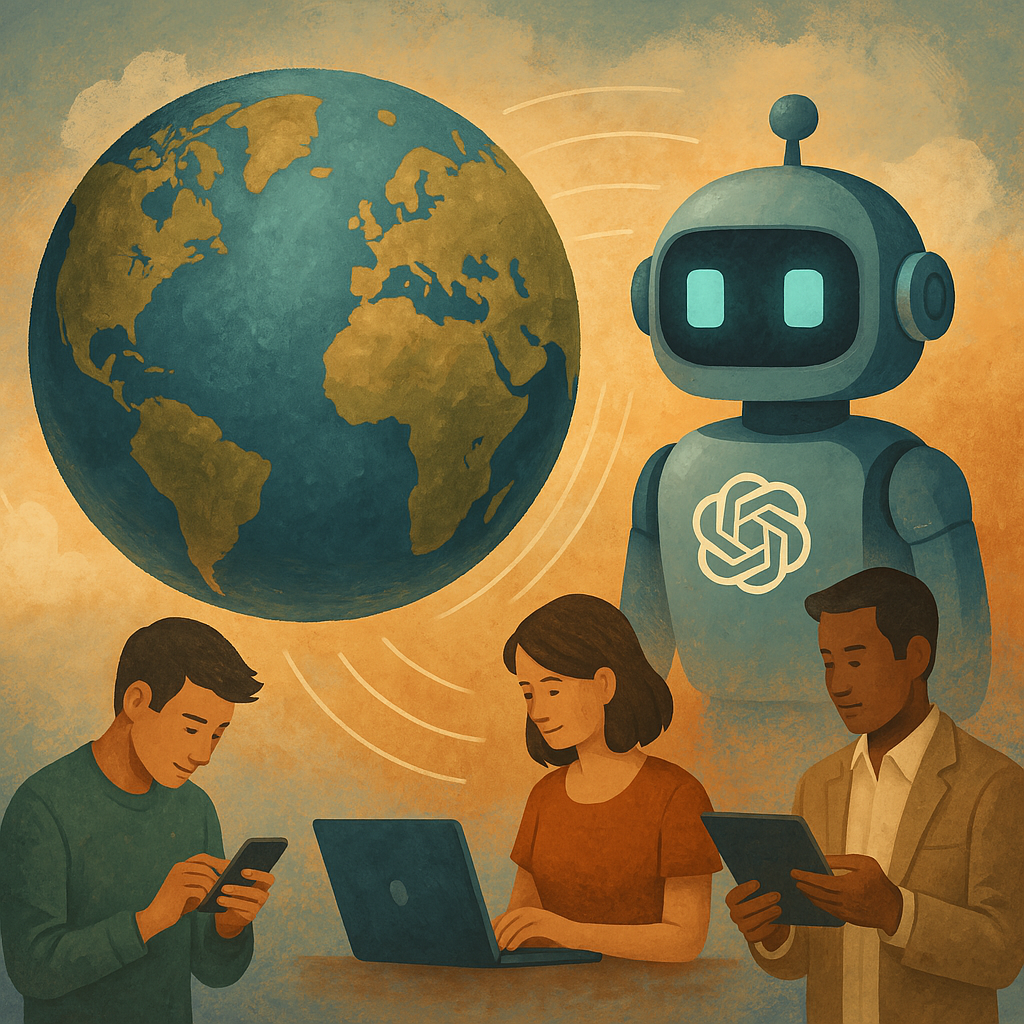Hello, this is Mana.
Today, I’d like to explore a topic that’s often discussed—even in the JDLA Generative AI Test: the rapid rise of ChatGPT and its impact on society.
Since its release on November 30, 2022, ChatGPT—a leading example of generative AI—has spread at an unprecedented speed. Its influence extends far beyond the tech world, reaching into education, business, and government.
In this article, we’ll look at how fast ChatGPT spread, why it gained popularity so quickly, and what kind of social changes it has brought about.
🚀 ChatGPT’s Explosive Growth
Developed by OpenAI, ChatGPT was launched to the public on November 30, 2022. What followed was a user growth rate that made history:
- 1 million users in just 5 days
- 100 million users in under 2 months
This adoption rate far exceeded that of apps like Instagram and TikTok, earning it the title of “the fastest-growing consumer application in history.”
And this wasn’t just a trend—it marked a fundamental shift in how technology and society interact.
💡 Why Did It Spread So Quickly?
Several key factors contributed to ChatGPT’s rapid global adoption:
- Ease of use via natural language
Users could simply type to interact with AI—an intuitive experience that attracted many people. - No technical knowledge required
Even those without programming skills could use it, helping it spread to non-engineering communities. - Free and open access at launch
The ability to try it out at no cost fueled interest through social media and word of mouth. - Wide range of applications
From writing and summarizing to translation and coding support, its versatility made it part of users’ daily routines.
Its simplicity and utility made it appealing to a broad audience, fueling rapid global expansion.
🌍 Societal Impact: A New Era of Everyday AI Use
The launch of ChatGPT marked a turning point where AI was no longer limited to specialists. Now, anyone could become an AI user.
We’re already seeing practical uses in various fields:
- Education: English learning, writing support, research assistance
- Business: Email drafting, meeting note summaries, idea generation
- Programming: Code fixes, function creation, learning support
Generative AI is now supporting people in their daily work and study, ushering in a new age of human-AI collaboration.
Governments and corporations are also accelerating AI integration, prompting updates to laws, policies, and educational programs—a ripple effect across society.
✅ Quick Summary for Learners
Q: What kind of social impact has ChatGPT had?
→ ChatGPT became widely accessible thanks to its ease of use and versatility. Its influence spread across education, business, and government, showing that AI had become a tool for everyone—not just experts.
Q: Why did generative AI spread so quickly?
→ Multiple factors contributed: natural language interaction, no need for technical knowledge, free public access, and support for a wide range of uses—all helped fuel its rapid global adoption.
📝 Final Thoughts
The rise of ChatGPT represents a shift from AI as a “technical tool” to an everyday partner. In exams like the JDLA Generative AI Test, understanding its social impact and real-world applications is increasingly emphasized.
It’s not just about the technology itself—it’s also about how it integrates into society. Let’s keep learning together! 📘



Comment